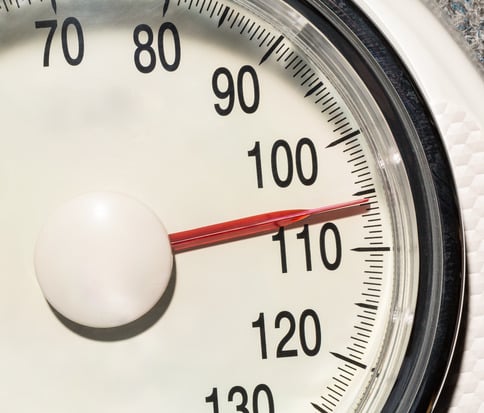
Limiting portions is a solid strategy for controlling weight and managing diabetes. And that goes for both treat foods and everyday wholesome foods. I’ve watched too many people pile food on their plates without concern because the food was nutritious. But even wholesome, nutritious foods pack calories. Too many calories, as you know, leads to a climbing number on the scale and a thicker waistline.
Here are some strategies I share with my clients.
Pre-portion.
Divide crackers, nuts, chips, candies and other foods into appropriate portions and put them in individual baggies. Now store all of the baggies in the original container. Need some crackers for lunch or snack? Grab a snack bag from the box without thought to the proper portion.
Eat only from a dish.
No digging your hand into a bag of chips or a box of cookies. No nibbling off someone else’s plate. If you want to eat it, put it on your own dish. Sit down and enjoy.
Use a tiny spoon.
Ice cream, pudding and other spoonable treats last longer when you eat them with a baby spoon or espresso spoon.
Fill up on lower-calorie foods.
Before eating more calorie-dense foods, eat a serving of nonstarchy vegetables, a salad or brothy soup.
Take a fast course in portions.
Weigh and measure everything you eat and drink for five days. Next fill your bowls, cups and glasses with water. Pour the water into measuring cups, so you can learn just how much food your dishes hold.
Use smart tools for proper portions.
- Measuring cups: At a minimum have a set with 1/4-cup, 1/3-cup, 1/2-cup and 1-cup measures. Additional sizes such as 1/8-cup and 2-cup measures are also handy.
- Food scale: A scale is perfect for weighing meats, fish, baking potatoes and more. My digital scale saves me time too. It keeps me from washing multiple measuring cups! I simply put my bowl or plate onto the scale and scoop my cottage cheese or cereal until the scale signals the amount I want in grams or ounces. I “zero” the scale and add the second food. Then the third and so forth. Now I have nothing to wash except the dish I eat from. I even use it for measuring peanut butter. Instead of measuring out two tablespoons, I use my food scale and knife to spread the proper 32 grams. No need to wash an extra spoon!
- Portion plates: There are a plethora of clever portion control dishes out there. You’ll see what I mean if you simply search the Internet for them. Some are divided plates. Some have pictures of food guiding you where to put starches, meats, vegetables, etc. And others are quite stylish with “hidden” guidelines directing you to place your meat over a flower, vegetables over a larger flower and starches over a third flower.
Most people looking to rein in calories and manage weight will need to employ several portion control techniques as well as other healthful lifestyle strategies. Consider keeping a food journal, boosting your exercise, getting to bed on time, trading full-fat dairy for low-fat dairy, avoiding fatty meats and limiting added sugars. Feel free to swap some of those sugars for sucralose and similar products.
Managing weight is hard. Draw on your creativity, patience and toolbox of skills and strategies. Be consistent and your hard work will pay off.
 Jill Weisenberger, MS, RDN, CDE, FAND has worked as both a nutrition counselor and a diabetes educator in the hospital and research settings, and now in private practice in Newport News, VA. Jill is the author of Diabetes Weight Loss – Week by Week and two upcoming books, The Overworked Person’s Guide to Better Nutrition and 21 Things You Need to Know about Diabetes and Your Heart. She is a member of the Academy of Nutrition and Dietetics, the American Association of Diabetes Educators and the American Diabetes Association. Jill is a paid contributor to Sucralose.org. Follow Jill on Twitter @NutritionJill and find more at www.JillWeisenberger.com.
Jill Weisenberger, MS, RDN, CDE, FAND has worked as both a nutrition counselor and a diabetes educator in the hospital and research settings, and now in private practice in Newport News, VA. Jill is the author of Diabetes Weight Loss – Week by Week and two upcoming books, The Overworked Person’s Guide to Better Nutrition and 21 Things You Need to Know about Diabetes and Your Heart. She is a member of the Academy of Nutrition and Dietetics, the American Association of Diabetes Educators and the American Diabetes Association. Jill is a paid contributor to Sucralose.org. Follow Jill on Twitter @NutritionJill and find more at www.JillWeisenberger.com.




